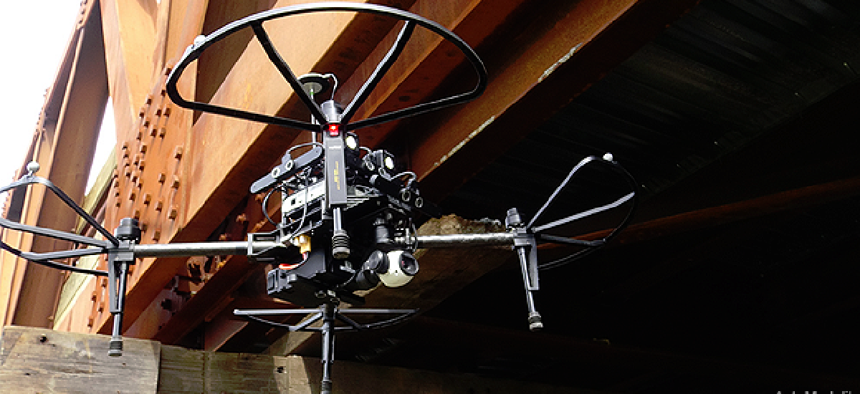Integrated visualization, navigation raise the bar for bridge-inspection drones

Equipped with stereo cameras, computer vision, onboard computers and sensors, AutoModality’s drones can sense, explore and analyze infrastructure in GPS-denied environments.
Drones are inspecting the underside of bridges in many states, including Minnesota, Ohio, Delaware and Connecticut. Use of the unmanned aerial systems limits the need for raised platforms, road closures and expensive equipment, and avoids putting skilled personnel in harm’s way.
Not all drones, however, can get close enough to the structures to provide images with sufficient detail for transportation infrastructure officials to determine if a manual inspection is necessary. Additionally, the GPS navigation that drones depend on will not work in all locations.
AutoModality, a San Francisco-based company, has developed an autonomous system that can sense, explore and analyze infrastructure using drones equipped with stereo cameras, computer vision, onboard computers and sensors.
“The drone, using computer vision, [can] recognize aspects of the asset, in this case bridges, to be able to localize itself and be able to know where it is in relation to the bridge,” AutoModality CTO and cofounder Ed Koch explained. That lets the drone fly close-in automated routes along the bridge, he said.
AutoModality uses DJI drones and upgrades them with its autonomous hardware and software. End users will fly the drone using the same hardware that control a typical unmanned aerial system, but an application programming interface connects to a companion computer running computer vision and machine learning software to determine the drone’s location.
The drone’s cameras send high-definition video in real-time to the inspectors and take high-resolution photos for later analysis.
Users won’t need a 3-D model of the bridge; they can select from a list of possible bridge types.
AutoModality was recently chosen as grand prize winner of Genius NY’s business competition, winning a $1 million from New York state for innovation in unmanned systems.
The company has opened an office in central New York near the Griffiss International Airport, which is one of six sites chosen by the Federal Aviation Administration to conduct research into integrating UAS into the national airspace system.





